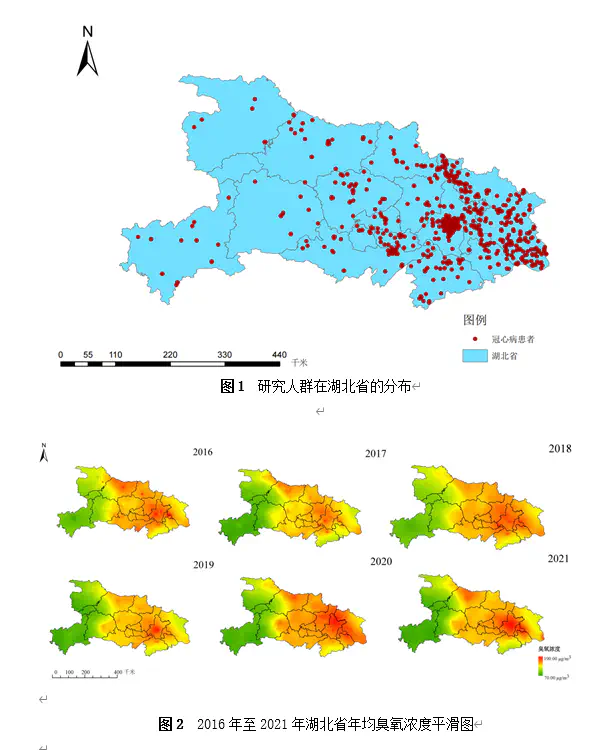Ambient ozone exposure and the severity of coronary heart disease: a predicting role of aspartate aminotransferase
 population distribution (up) & Annual Average Ozone Concentration Smooth Plot (down)
population distribution (up) & Annual Average Ozone Concentration Smooth Plot (down)Abstract
Objective: To explore the relationship between ozone exposure and the severity of coronary heart disease (CHD) and the potential role of aspartate aminotransferase (AST).
Methods: We included 2537 CHD patients who had undergone coronary angiography. Information was retrieved from the Zhongnan Hospital of Wuhan University from 2016 to 2021. The Synergy Between PCI with TAXUS and Cardiac Surgery (SYNTAX) score was calculated to describe the severity of CHD and categorized into low (0-22) or high (≥23) SYNTAX score groups. We evaluated each patient’s ozone exposure according to their residence address. The logistic regression was used to fit the association between ozone exposure and the severity of CHD. Linear regression was performed to explore the relationship between ozone exposure and biochemical indicators. Mediation analysis was performed to examine the potential effect of AST in the association between ozone exposure and CHD severity.
Results: In the low and high SYNTAX score groups, the 3-year average ozone concentration (standard deviation) was 110.72±17.7 μg/m3 as well as 112.11±16.7 μg/m3, respectively. Each 10 μg/m3 increment in ozone concentration was associated with an elevated likelihood (OR=1.072, P<0.05) of having more severe CHD. Mediation analysis showed that AST mediated 13.1% (p = 0.045) of the ozone–SYNTAX score association.
Conclusion: This study indicated that long-term ozone exposure was associated with the severity of CHD, and serum AST might be used as a predictor of the severity of coronary heart disease.